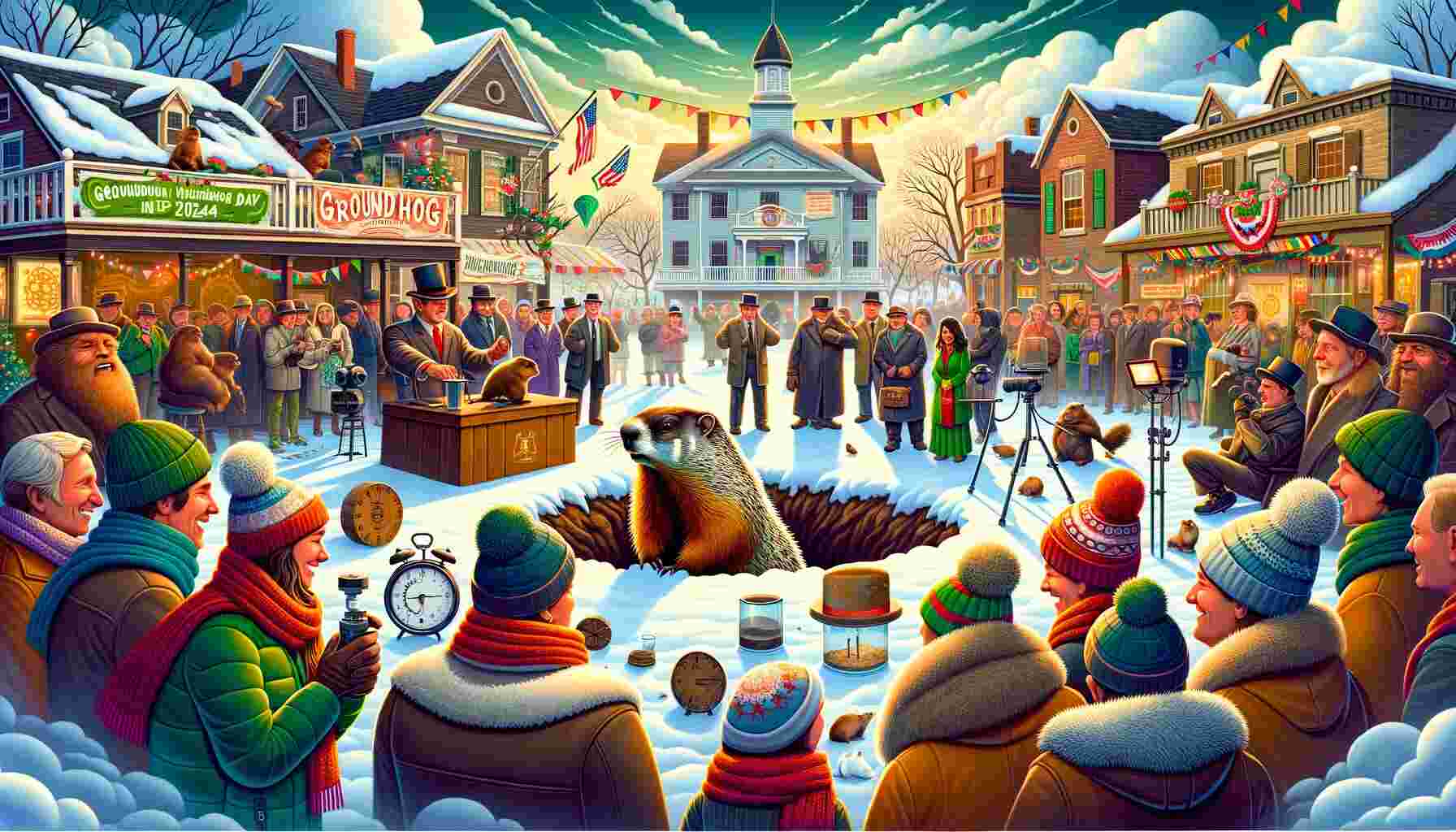Groundhog Day, celebrated every year on February 2nd, is a uniquely American tradition that intertwines folklore, cultural celebration, and a dash of whimsical science. As we approach Groundhog Day 2024, let’s delve into the fascinating aspects of this day, from its historical roots to modern-day festivities and the intriguing science behind the folklore.
Historical Significance and Origins
Groundhog Day’s origins can be traced back to ancient European traditions and the medieval feast of Candlemas. In pre-Christian times, this period was marked by Imbolc, a day rich in folklore and predicting the coming of spring. As German settlers arrived in Pennsylvania, they brought with them the tradition of using animals, initially badgers and hedgehogs, to predict the weather. Adapting to their new homeland, they switched to groundhogs, which were abundant in the area. The first official celebration in Punxsutawney, dating back to 1886, marked the beginning of what would become a nationally recognized event.
Groundhog Day 2024 – Events and Celebrations
The focal point of Groundhog Day is in Punxsutawney, Pennsylvania, where thousands gather at Gobbler’s Knob to witness the famed groundhog, Punxsutawney Phil, predict the weather. This year’s event promises a mix of traditional and modern festivities, including music, speeches, and the pivotal moment when Phil emerges from his burrow. With live broadcasts and virtual event options, the celebration reaches a global audience. In addition to Punxsutawney, various regions in the United States host their own unique celebrations, featuring local groundhogs and tailored festivities.
The Science and Folklore
At the heart of Groundhog Day lies a simple folklore: if the groundhog sees its shadow, there will be six more weeks of winter; if not, an early spring is on the horizon. While the accuracy of these predictions is a topic of debate, with Punxsutawney Phil reportedly having a success rate of around 39%, the tradition continues to captivate. Contrasting this, the Farmers’ Almanac employs a blend of mathematical and astronomical formulas, claiming an accuracy rate of 80-85%. This juxtaposition of folklore and scientific prediction methods adds a layer of intrigue to Groundhog Day, reflecting our enduring fascination with nature’s cues in an age of advanced technology.
Scientific Insights
Research indicates that Punxsutawney Phil’s weather predictions, based on whether he sees his shadow or not, have an average accuracy rate of around 40% over the past decade. This is determined by comparing his forecasts with the actual U.S. national temperatures. For instance, in 2022, Phil predicted a longer winter which was partially accurate: February saw slightly below-average temperatures, while March experienced above-average temperatures in the contiguous United States.
Additionally, an analysis by FiveThirtyEight, using data from the National Oceanic and Atmospheric Administration (NOAA), shows variability in Phil’s accuracy across different U.S. regions. From 1994 to 2021, his prediction accuracy ranged from 50% in the South to about 39.3% in the Northwest and Northeast.
These insights highlight the challenge of making broad weather predictions for a country with diverse regional climates. While Phil’s predictions are a cherished tradition, they also serve as a reminder of the complexities involved in meteorological forecasting.
Conclusion
Groundhog Day 2024 encapsulates the spirit of tradition, the joy of communal celebration, and the human penchant for interpreting natural phenomena. Whether one views the day as a quaint piece of folklore or a light-hearted predictor of weather, it remains a charming fixture in the American cultural calendar, bringing together history, community, and the whimsical notion that a groundhog might know a thing or two about the coming of spring.
Here’s your next read: Eclipse 2024 Essentials: Your Ultimate Viewing and Travel Guide










